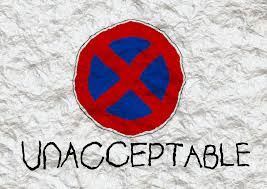Where are we now?
General principles for all finding of fact hearings
- The burden of proof rests with the party making the allegations.
- The facts must be proved on the balance of probabilities. Common-sense, not law, requires that in deciding this question, regard should be had to whatever extent is appropriate to inherent probabilities – Re B [2008] UKHL 35.
- Findings of fact must be based on evidence, which can include inferences that can properly be drawn from the evidence, but not on suspicion or speculation – Re A (A Child) (Fact-finding hearing: Speculation) [2011] EWCA Civ 12.
- FPR 22.1 The court may control the evidence by giving directions as to – (a) the issues on which it requires evidence; (b) the nature of the evidence which it requires to decide those issues; and (c) the way in which the evidence is to be placed before the court.
- Any evidence to be admissible must be relevant, i.e. if it is logically probative or disapprobative of some matter which requires proof. The Judge must then decide, if relevant, should the evidence be admitted. The strength of the argument for admittance will always depend on the Judge’s assessment of its significance – O’Brien v Chief Constable of South Wales Police [2005] UKHL 26, cited with approval in F v M [2021].
- Hearsay evidence is admissible in proceedings relating to children – Re A (A Child) [2015] EWFC 11). When estimating the weight to be given to hearsay evidence, the court must have regard to any circumstances from which any inference can reasonably be drawn as to the reliability or otherwise of the evidence. In addition, the court has to consider hearsay evidence anxiously and carefully – R v B County Council, ex parte P [1991] 2 All ER 65.
- The court is not bound by the cases put forward by the parties but may adopt an alternative solution of its own – Re S (A Child) [2015] UKSC 20. The court must ensure that any additional or different findings made are securely founded in the evidence: and that the fairness of the fact-finding process is not compromised – Re G and B (Fact finding Hearing) [2009] EWCA Civ 10).
Particular issues in cases of domestic abuse
- The need to identify and decide upon issues of domestic abuse is important in family proceedings. The court must consider the impact of the abuse on both the child and parent and determine what orders are to be made for the future protection and welfare of both. – Re H-N and Others (children) (domestic abuse: findings of fact hearings) [2012] EWCA Civ 448 para 4.
- It is accepted by the Court of Appeal in Re H-N, that greater prominence needs to be given to consideration of abusive behaviour in the family courts. Judges should consider para 60 of Statutory Guidance published by the Home Officer pursuant to section 77(1) of the Serious Crime Act 2015 which identified paradigm behaviours of controlling and coercive behaviour. –see further F v M [2021] EWFC 4.
- Domestic abuse is not restricted to physical violence and visible injuries or consideration of separate incidents. PD12 J recognises coercive and controlling behaviour, defined as follows:
- Coercive behaviour is defined as ‘an act or a pattern of acts of assaults, threats, humiliation and intimidation or other abuse that is used to harm, punish or frighten the victim. (note comment in F v M that reference to ‘an act’ is misleading; what is required is a pattern of behaviour
- Controlling behaviour is defined as an act or pattern of acts designed to make a person subordinate and/or dependent by isolating them from sources of support, exploiting their resources and capacities for personal gain, depriving them of the means needed for independence, resistance and escape and regulating their everyday behaviour’.
- Key to both behaviours is an appreciation of a ‘pattern’ or a ‘series of acts’ F v M [2021] EWFC 4 para 4. Such behaviour is dangerous as it seeks to undermine the autonomy of the victim.
- Examples of the ‘paradigm strategies’ referred to above were set out in F v M from para 60. This is not an exhaustive list but rather a ‘check list’ to prompt questioning and inquiry about ‘that which might, in isolation, appear innocuous or insignificant may in the context of a wider evidential picture be more accurately understood’ – para 61.
- Isolation from friends and family
- Deprivation of basic needs
- Monitoring time
- Monitoring via online communication tools/spyware
- Taking control over aspects of everyday life
- Depriving access to support
- Denigration
- Enforcing activities that humiliate, degrade or dehumanise.
- Forcing participation in criminal activity
- Financial abuse
- Controlling access to school/study
- Taking wages, benefits or allowances
- Threats to hurt or kill.
- Threats to harm a child.
- Threats to reveal or publish private information.
- Assault
- F v M [2021] also referred to section 76 Serious Crime Act 2015, to assist a broader understanding of the behaviours. – para 105. It must be repeated, have a serious effect on the victim and the perpetrator knows or ought to know the behaviour will have this effect.
- The Court of Appeal in re H-N identified the ways in which an abusive pattern of behaviour can harm a child – para 31.
- Is directed against or witnessed by the child.Causes the victim of abuse to be so frightened of provoking an outburst or reaction from the perpetrator that she/he is unable to give priority to the needs of her/his child.Creates an atmosphere of fear and anxiety in the home which is inimical to the welfare of the child
- Risks inculcating, particularly in boys, a set of values which involve treating women as inferior to men.
- Even if there is no longer any future risk of assault, does not mean that a pattern of coercive and controlling behaviour will not manifest itself in some other albeit more subtle manner to cause further harm – re H-N para 52.
The approach of the court
- PD12J does not establish a ‘free standing jurisdiction’ to determine domestic abuse allegations which are not relevant to the determination of the child welfare issues that are before the court – Re H-N para 58a). The court must focus on the over-arching issue of coercive and controlling behaviour in the context only that it is relevant and necessary to determine issues as to a child’s future welfare – Re K [2022] EWCA Civ 468 para 63.
- Therefore, a fact finding hearing should be considered ‘necessary’ to provide a factual basis for a welfare report or assessment, a basis for an accurate assessment of risk and/or the making of child arrangement orders or to consider the need for a domestic abuse related activity.
- A finding of fact hearing is a ‘major judicial determination’ which will inevitably introduce delay – Re K [2022] para 42 and the court should consider the possibility of non-court dispute resolution at the FHDRA – Re K para-40
- The real evil of coercive and controlling behaviour is its corrosive impact on the victim’s autonomy. Not all ‘directive, assertive, stubborn or selfish’ behaviour will qualify. Where the behaviour does not have the character of being degrading or dehumanising. or ‘designed to make a person subordinate’ it is likely to be ‘unnecessary and disproportionate’ for detailed findings of fact to be made. ‘It will not be in the interests of the child or of justice for the court to allow itself to become another battle ground for adult conflict’ – Re L (Relocation: Second Appeal) 2017 EWCA Civ 2121 para 61 (endorsed by Re H-N para 32).
- It is therefore of critical importance to identify at an early stage the real issue in the case in particular with regard to the welfare of the child [PD12J 14] before a court is able to assess if a fact-finding hearing is necessary and what form it should take – Re H-N para 8.
- Where coercive or controlling behaviour is alleged, that assertion should be the primary issue for determination. Any other specific factual allegations should be pursued because of their potential probative value to the alleged behaviour, unless the factual allegation is so serious that it justifies determination regardless – a likely example being an allegation of rape – Re H-N para-59
- PD 12 J sets out a step-by-step template that courts must follow in these cases and underpins that the court should in many cases focus on a pattern of behaviour, rather than individual incidents – Re H-N para 25. PD12 J remains ‘fit for purpose’ and properly reflects modern understanding of domestic abuse – Re H-N para 28.
- The Court of Appeal in re H-N para 37 summarised the proper approach of the court as follows:
- Consider the nature of the allegations and the extent they are likely to be relevant in deciding to make a CAO.
- Have in mind PD12J.16, to provide a basis of assessment of risk and therefore the impact of the alleged abuse on the child.
- PD12J.17 the court must consider if a separate fact finding is necessary and proportionate, considering the overriding objective FPR 1.1 and the President’s Guidance of June 2020 – ‘Parties appearing before the court should expect the issues to be limited only to those which it is necessary to determine to dispose of the case, and for oral evidence and oral submissions to be cut down only to that which it is necessary for the court to hear’. Is there other evidence available to provide a sufficient factual basis to proceed?
- The court must isolate what ‘may sometimes seem to be relatively innocuous incidents and locating them in a context which illuminates their greater significance’ F v M [2021] para 100.
- It would benefit the court and parties for Cafcass to be involved prior to any decision as to whether a finding of fact is necessary – Re H-N para 38 and consideration ought to be given to more substantive Cafcass work beyond the safeguarding letter.
- Judicial continuity is important, to enhance the efficient and sympathetic management of the process – para 6 vi Re B-B (Domestic Abuse: Fact Finding) [2022]
How are allegations to be presented to and considered by the court?
Presentation of the evidence
- Evidence needs to be organised and structured so that everyone understands its significance – Re H-N para 41. This is important in terms of procedural fairness and simple efficiency. The Court of Appeal in Re H-N found force in the criticisms of limited ‘Scott schedules’, as this may reduce the focus of the court and deny the proper assessment of the alleged perpetrator’s behaviour as a whole and to what extent this forms a ‘pattern’.
- However, the Court of Appeal was unable to offer a clear alternative to the use of schedules, suggesting that it may assist to adopt a ‘threshold document’ akin to public law proceedings which is supported by more detailed narrative statements. The Judge in F v M [2021] considered it inappropriate to attempt prescriptive guidance, but commented that this insidious type of abuse ‘may not easily be captured by the more formulaic discipline of a Scott Schedule’ – para 113. It will be for the court in each individual case to determine if such schedules are useful.
- The court in Re B-B (Domestic Abuse: Fact Finding) [2022] EWHC 108 found it useful to consider the evidence relevant to each different kind of alleged domestic abuse in ‘clusters’. There was inevitably some overlap between the different ‘clusters’, but this built up a picture of the nature of the relationship under scrutiny and it was easier to see if patterns of behaviour emerged – para 6 i.
- The court will be assisted by the parents being asked to describe in short terms (either in a written statement or orally at a preliminary hearing) the overall experienced of being in a relationship with each other (Re H-N para 58d).
- The vulnerability of witnesses must be considered prior to the hearing in a ‘ground rules’ hearing and special measures considered as necessary. See Part 3A FPR – Vulnerable persons: participation in proceedings and giving evidence. A vulnerable person may not act in the same way as someone more independent and confident if they are abused or exploited in the relationship – M (A Child) [2021] EWHC 3225.
Weighing the evidence
- The court must take into account all the evidence, considering each piece of evidence in the context of the other evidence, surveying a wide landscape, and must avoid compartmentalising evidence. The court must exercise an overview of the totality of the evidence in order to conclude whether the case put forward has been made out to the appropriate standard of proof – see Re U, Re B (Serious Injury: Standard of Proof) [2004] EWCA Civ 567, W and F (Children) [2015] EWCA Civ 1300, Re E (A Child) [2016] EWCA Civ 473 and AS v TH [2016] EWHC 532 (Fam) MacDonald J).
- In Re BR (Proof of Facts) [2015] EWFC 41 Peter Jackson J (as he then was) stated (paragraph 8): ‘Each piece of evidence must be considered in the context of the whole. The medical evidence is important, and the court must assess it carefully, but it is not the only evidence. The evidence of the parents is of the utmost importance and the court must form a clear view of their reliability and credibility’.
- . It is essential that the court forms a clear assessment of their credibility and reliability of the parents’ evidence. They must have the fullest opportunity to take part in the hearing and the court is likely to place considerable weight on the evidence and the impression it forms of them – Re W and another (non-accidental injury) [2003] FCR 346).
- Any judge appraising witnesses in the emotionally charged atmosphere of a contested family dispute should warn themselves to guard against an assessment solely by virtue of their behaviour in the witness box and to expressly indicate that they have done so Re M (Children) [2013] EWCA Civ 1147. In cases of alleged sexual assault, since July 2020 Family Court judges who hear such cases must undertake training on the ‘serious sexual assault’ programme, which includes elements in respect to psychological reactions to sexual assault and trauma – re H-N para 67.
- In private law cases, the court needs to be vigilant to the possibility that one or other parent may be seeking to gain an advantage in the battle against the other. This does not mean allegations are false, but it does increase the risk of misinterpretation, exaggeration or fabrication – Re B-B (Domestic Abuse: Fact Finding) [2022] para 26 ii.
- Memory becomes fainter with every passing day and imagination becomes correspondingly more active. Therefore, contemporaneous documents are always of the utmost importance – A County Council v M and F [2012] 2 FLR 939.
- A witness may tell lies during an investigation and the hearing for many reasons, such as shame, misplaced loyalty, panic, fear and distress. The fact that a witness has lied about some matters does not mean that he or she has lied about everything – R v Lucas [1982] QB 720, applied in family proceedings in Re H-C (Children) [2016] EWCA Civ 136)). 5 B116 23.
- If the court determines that the Lucas direction is called for, or is invited to proceed on that basis, submissions should be made to identify (i) the deliberate lie(s) relied upon; (ii) the significant issue to which it/they relate(s); and (iii) on what basis it can be determined that the only explanation for the lie(s) is guilt – Re A, B, C (Children) [2021] EWCA Civ 451, Macur LJ.
- The court in Re B-B (Domestic Abuse: Fact Finding) [2022] suggested the following approach at para 33:
- First review the general credibility of the parties and their supporting witnesses
- Then review the history of the relationship.
- Look at broad categories of coercive/controlling behaviour.
- Identify those individual allegations which require discrete determination.
Reliance on criminal law concepts
- When considering domestic abuse, the alleged behaviour may be capable of prosecution in a criminal court, which has as its aim the punishment of offenders by the state and operates to a different and higher standard of proof. It is wrong for the Family Court to be drawn into analysis of factual evidence in proceedings relating to children which is based on criminal law principles and concepts – Re R (Children) (Care Proceedings: Fact-finding Hearing) [2018] EWCA 198 para 62, approved by Re H-N para 66.
- The Family Court need not shy away from the use of the word ‘rape’ however is not required to decide if an offence has been proved to the criminal standard; the focus is on the abusive nature of the behaviour and the borderline between ‘consent’ and ‘submission’ is less significant –Re H-N para 71.
- The court was asked to give further guidance in Re A and Another v B and Others [2022] and affirmed the position set on in Re H-N.
- The court in Re A did however offer some further guidance.
- The courts must consider carefully as to how a hearing is conducted regarding allegations of rape, in particular the scope of cross examination of an alleged victim with regards to their sexual history – Re H-N para 74.
- There is no automatic bar on the admission of evidence about a party’s sexual history with third parties, but the court is likely to be slow to find it relevant and it will require a specific application.
- However, evidence about the parties’ sexual relationships with one another is likely to be relevant; the court must be mindful of its obligation to consider the wide canvas of evidence and patterns of behaviour.
- There is no need to make a specific application to the court in such circumstances, unless reliance is placed on intimate images.
- With regard to the question as to how family court judges ought to deal with ‘rape myths/stereotypes’ the court in Re A was referred to the CPS Guidance Annex A ‘tackling rape myths and stereotypes’. The court agreed that it could assist a judge to have regard to such materials, including Chapter 6 of the Equal Treatment Bench Book July 2022. But the court declined to attempt a list of common myths/stereotypes, which risked creating a rigid framework.
After the hearing
The court must produce a schedule of findings made or endorse that presented by counsel. See para 29 PD12J. This represents good practice and will help to illuminate a judge’s evaluation of the evidence and inform their ultimate findings
Useful authority discussing the correct approach to appealing a finding of fact T (Fact-Finding: Second Appeal) [2023] EWCA Civ 475 (05 May 2023) (bailii.org)
Further resources
Some useful commentary on the recent CAFCASS guidance of October 2024 for cases involving allegations of domestic abuse New Cafcass Domestic Abuse Policy – lots of starting points, but where will we end up? / Pink Tape
Judicial guidance as to the operation of the Pathfinder pilot scheme in private law cases Child A and B, Re [2024] EWFC 284 (B) (11 October 2024) (bailii.org)





